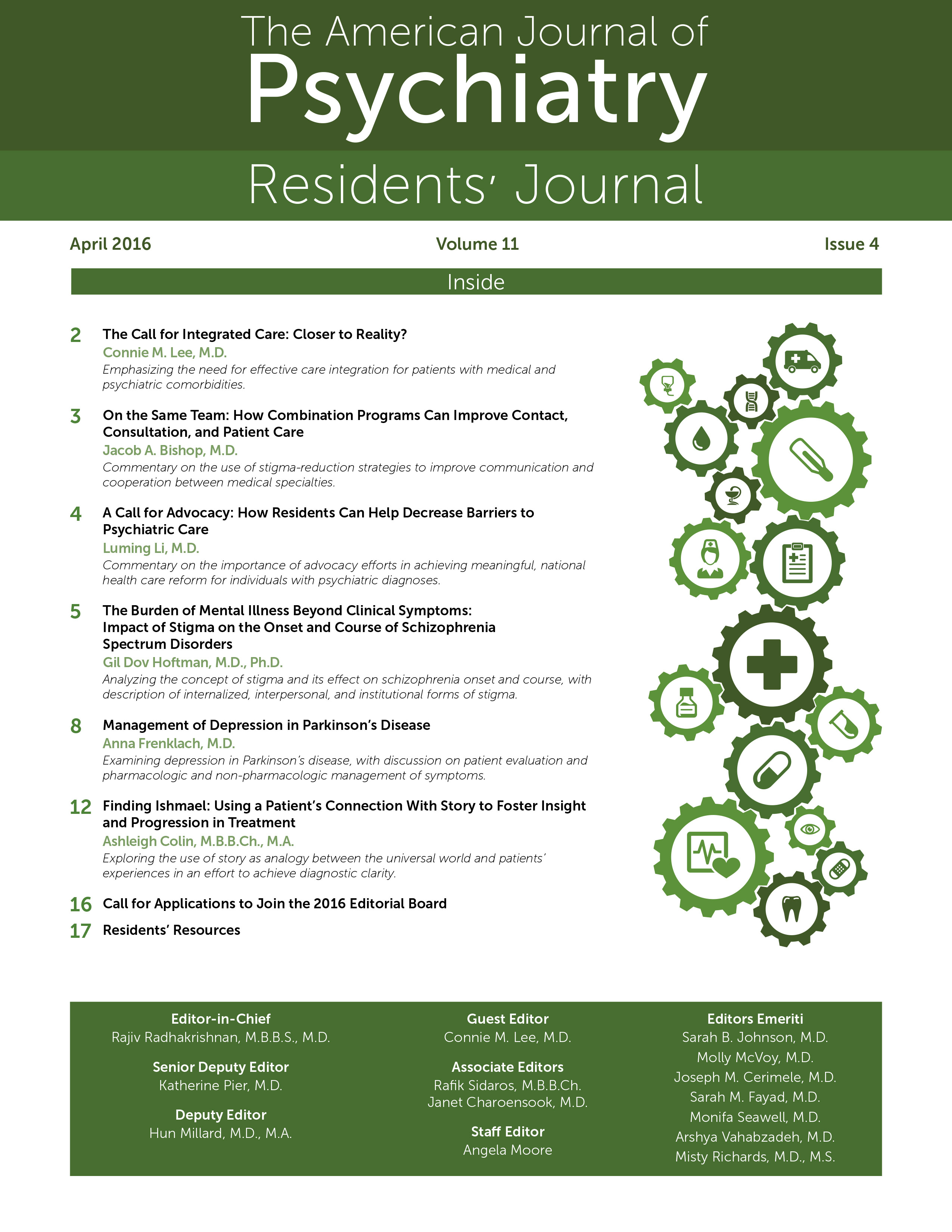In the United States, it has been estimated that two-thirds of adults with a psychiatric disorder receive no treatment (
1). Among those who do receive treatment, either in a general medical or mental health setting, half do not actually meet criteria for a psychiatric disorder (
1), with treatment often falling below minimal standards of quality (
2). Lack of access to mental health care has long been cited as problematic, with important ramifications on individual and population health. In a discussion of current mental health care delivery, one must consider not only the barriers that limit access to or utilization of care but also think critically about the quality of care that is delivered to ensure that limited resources are being used effectively.
Under traditional care delivery, behavioral health has largely been relegated to the periphery. A number of factors contribute to this marginalization. Current payment systems, which arose out of an attempt to contain costs after deinstitutionalization, led to a financing model in which behavioral health benefits are “carved-out” or separately managed or financed outside of the usual provider networks established by medical payers. Separate medical record systems, geographically distinct practice settings, and lack of standardized or routine communication or care coordination between behavioral health specialists and referring medical practitioners all serve to promote fragmentation of care (
3).
Though treatment access for mental health has been increasing over time, the rate of increase has largely been in the sector of general medical or primary care services (
1). Only a few patients treated in the general medical setting, however, receive minimally adequate care (as defined by evidence-based guidelines) when compared to those treated in mental health sectors (12.7% vs. 48.3% [see reference
2]). Primary care doctors site shortages of mental health providers, health plan barriers, and inadequate or lack of insurance coverage as important impediments to mental health care access (
4). Furthermore, the stigma associated with psychiatric disorders affects patients, their families, health care providers, institutions, and policy makers, ultimately serving to restrict resource allocation, as well as access to and utilization of timely and adequate care (
5).
Efforts to integrate behavioral health and primary care services have been ongoing for a number of years for good reason. Neuropsychiatric conditions account for up to a quarter of all disability-adjusted life years worldwide (
6). Psychiatric disorders increase the risk for diseases, intentional and unintentional injury, and are independently associated with a substantial increase in all-cause mortality (
6). Inadequately treated psychiatric disorders are associated with poor health, higher medical illness and complication rates, increased health care service use, and overall higher health care costs (
3).
As the Affordable Care Act continues to take effect, its mandate to expand access to high-quality care while reducing costs is reshaping the landscape of health care delivery. What could not be achieved under traditional payer models is now a more likely, and financially viable, possibility (
3). Hospitals and providers will increasingly receive payment for “value over volume,” and traditional fee-for-service payment will shift toward capitation or bundled payments that will incentivize health care innovations and integration of services. Since there is “no health without mental health,” this most recent health care reform presents a unique opportunity and challenge for psychiatrists to finally realize effective care integration for patients with medical and psychiatric comorbidities.
